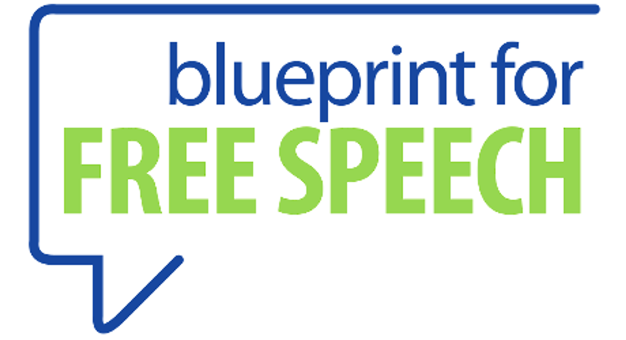Blueprint launches Perugia Principles for Journalists Working with Whistleblowers in the Digital Age
Blueprint for Free Speech has launched a new report outlining how journalists can work responsibly to safeguard whistleblowers. The report was compiled by Julie Posetti, Dr Suelette Dreyfus and Naomi Colvin, alongside a roundtable of 20 international journalists and experts hosted by Blueprint.
The Perugia Principles for Journalists Working with Whistleblowers in the Digital Age seek to guide journalists in their interactions with whistleblowers. Particularly, they outline how to navigate the problems which have arisen from the Digital Age, which often compromise globally established obligations for journalists surrounding confidential sources, as well as strong traditions of legal source protection. These new Digital Age challenges to the legal and ethical frameworks, put in place to support investigative journalism and whistleblowers, are what the Perugia Principles seek to address.
‘The Perugia Principles for Journalists Working with Whistleblowers in the Digital Age’ is the first set of international guidelines for journalists working with whistleblowers in the digital age.
The digital age has brought with it many opportunities for high impact investigative journalism, like that of the Snowden revelations or the Panama Papers. It is now possible for whistleblowers to disclose information in the public interest at unprecedented scale, and for journalists to write stories that help their readers make sense of complex systems and big data.
At the same time, the digital age brings with it a host of threats for investigative journalists and the sources they rely on. National security and law enforcement agencies have greater powers of surveillance and interception than ever before. Insecure digital methods of communication can leave sources uniquely vulnerable at their first point of contact with a journalist. Leak investigations, and prosecutions, proliferate.
Source protection is a fundamental tenet of investigative journalism and the often delicate relationship between a journalist and their source remains paramount. The digital age presents a range of challenges to the ethical and legal frameworks that underpin that relationship, which cannot be resolved as simply as installing a new piece of software.
Therefore the use of encrypted messaging is recommended – not as a panacea, but as an important element of front-line protection. Other recommendations include outlining the risks of digital exposure to sources or whistleblowers; conducting risk assessments; providing safe ways for sources to make ‘first contact’ in a world of metadata bread crumb trails from phones; the publication of original documents and datasets where possible and safe to do so; and the responsibility of news publishers to provide appropriate data security, policies and training.
The Perugia Principles are intended to guide journalists through this new territory, with all of its opportunities and pitfalls, and include explanations and case studies showing how each the Principles can be put into practice. A pocket-sized edition of the Principles has been translated into German, Greek and Spanish.
‘The Perugia Principles for Journalism: Working with Whistleblowers in the Digital Age’ is a short, pocket-sized edition of the Principles
Spanish: ‘Los principios de Perugia para el Periodismo: trabajando con alertadores en la era digital
German: Perugia-Prinzipien fur Journalismus: Arbeiten mit Hinweisgebern im digitalen Zeitalter
Russian: Перуджийские принципы для журналистов: Работа с разоблачителямив эпоху цифровыхтехнологий
Greek: Οι Αρχές της Περούτζια για τη δημοσιογραφία: Δουλεύοντας με μάρτυρες δημοσίου συμφέροντος στην ψηφιακή εποχή
12 PRINCIPLES FOR WORKING WITH WHISTLEBLOWERS IN THE DIGITAL AGE:
First, protect your sources. Defend anonymity when it is requested
Provide safe ways for sources to make ‘first contact’ with you, where possible
Recognise the costs of whistleblowing for the whistleblower, and prompt them to think through ahead of time how to cope when the story breaks
Verify material focusing on the public interest value of the information, not on your view of the attitudes or opinions of the source or whistleblower
Take responsibility for your digital defence and use encryption. Even though encryption may not completely defend your source, it offers important first-line protection.
Determine the biggest threats to you and your source, and what specific steps you need to take to protect both of you
Explain the risks of digital exposure to your source or whistleblower. On sensitive stories, train your whistleblowers in basic digital security
Publish original documents and datasets in their entirety where possible and safe to do so, recognising the importance of datasets in stories
Securely delete data provided by sources, when asked, to protect confidential sources, consistent with ethical, legal and employer obligations
Ensure any digital drop boxes for confidential sources and whistleblowers offer a good level of security, and, for higher-risk materials, anonymity
Understand the country, regional and international legal and regulatory frameworks for protecting confidential sources and whistleblowers
Encourage news publishers to practice their responsibility to provide proper data security for journalists, sources and stored materials, along with appropriate training and policies to guide journalists

